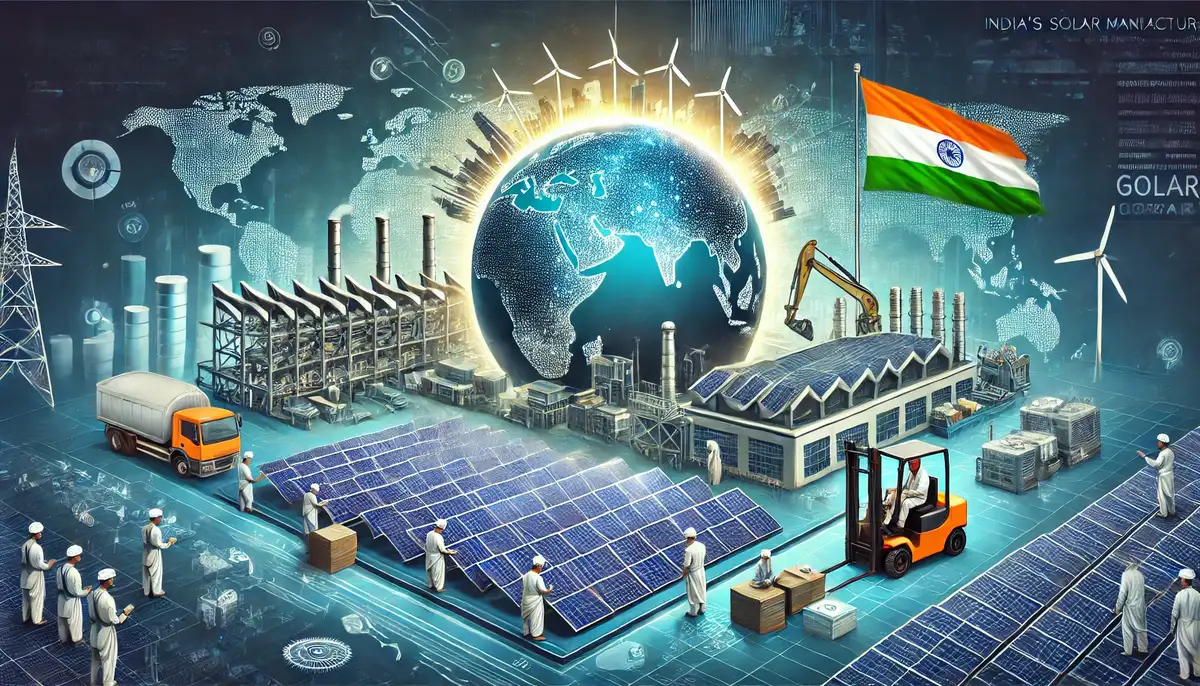The Evolution of India’s Solar Industry: A Global Perspective
The world is undergoing an unprecedented energy transition, with solar power at the forefront of decarbonization efforts. India, the world’s third-largest solar market, is now emerging as a global contender in solar manufacturing—but the path is complex.
While the Indian government has pushed for Domestic Content Requirements (DCR) and new Bureau of Indian Standards (BIS) certifications, the industry faces rising costs, supply shortages, and global trade challenges. The world is watching how India navigates this shift, as it could determine the future of sustainable energy economics.
As an industry expert with over two decades in renewable energy, I believe that India must strike a balance between self-reliance and global integration. The success of India’s solar manufacturing sector will depend on three key factors:
- Cost competitiveness vs. imported modules
- Quality control and safety under new BIS standards
- Integration with global supply chains while protecting domestic interests
The Cost Dilemma: Competing with China & Global Markets
China currently dominates 75% of the global solar supply chain, thanks to vertical integration, economies of scale, and massive state subsidies. In contrast, India’s DCR modules are 3-4 times more expensive than imported Chinese modules due to:
- High raw material costs (solar glass, wafers, polysilicon imports)
- Limited domestic production capacity
- Recent trade barriers, including anti-dumping duties
Can India Compete?
- If India continues to focus solely on protectionist policies, it may face long-term un-competitiveness.
- If India integrates with global supply chains while developing its own, it can become a global manufacturing hub.
The real question is: Should India compete or collaborate?
Quality & Safety: The BIS Certification Game-Changer
India’s new BIS standards (2025 Solar Systems, Devices, and Components Goods Order) aim to bring domestic solar quality on par with international standards.
BIS Standards & Key Quality Reforms:
- Mandatory BIS Certification: All solar PV modules, inverters, and batteries must obtain BIS certification before sale.
- Minimum Efficiency Benchmarks: 18% efficiency for mono-crystalline silicon and thin-film modules 17% efficiency for poly-crystalline silicon modules
- Strict Quality Control: Manufacturers must comply with performance warranties and third-party testing.
Challenges in Implementation:
- Lack of Testing Infrastructure: Not enough BIS-certified labs for fast approvals.
- Market Enforcement: Without strict monitoring, low-quality or untested modules may still flood the market.
- Global Acceptance: BIS certification must align with IEC standards to make Indian solar modules export ready.
India must avoid past mistakes where protectionist policies led to lower-quality installations. Instead, the country should combine DCR requirements with international quality benchmarks.
Lessons from the World: How Other Countries Are Leading
China’s Strategy: The Power of Vertical Integration
- Controls entire supply chain: From polysilicon to final module assembly.
- Leverages state-backed subsidies: Allows manufacturers to sell at ultra-low costs globally.
- Heavy investment in R&D: Leading in bifacial, perovskite, and high-efficiency modules.
The U.S. Approach: Balancing Local & Global
- Inflation Reduction Act (IRA) incentives: $369 billion in climate and clean energy investments.
- Combines domestic incentives with global partnerships: Encourages strategic collaboration with foreign solar firms.
Europe’s Focus: Sustainable & Ethical Sourcing
- New Carbon Border Tax: Penalizes imported solar panels with high carbon footprints.
- High sustainability standards: Encourages recycling & responsible manufacturing.
Where India Stands:
- Lags behind in R&D investments compared to China and the U.S.
- Still dependent on imports for key raw materials like wafers and polysilicon.
- But has a massive domestic market that can drive global interest.
India must learn from global models while building its own unique solar economy.
The Path Forward: India’s Global Roadmap
1. Strategic Global Partnerships
- Form partnerships with global solar giants (Europe, U.S., Japan) to bring advanced technology.
- Encourage foreign investments in Indian manufacturing under the PLI (Production Linked Incentive) scheme.
- Allow selective imports of high-efficiency modules while strengthening domestic production.
2. R&D Investment & Innovation
- Increase government funding for solar research to match China’s $2.4 billion annual R&D investment.
- Develop India’s first polysilicon & wafer manufacturing plants to cut import dependency.
- Focus on next-gen solar tech (bifacial panels, perovskite cells, floating solar).
3. Export-Oriented Manufacturing
- Align BIS standards with IEC global norms to make Indian solar products internationally viable.
- Target emerging markets (Africa, Southeast Asia, Latin America) with high-quality, low-cost solar exports.
Message to Global Solar Leaders: Why You Need to Work with India
India is not just a solar power consumer—it is a potential global manufacturing hub. However, to achieve this, it must integrate with international trade networks while maintaining domestic resilience.
For global stakeholders looking for a sustainable alternative to Chinese-dominated supply chains, India presents an opportunity to invest, innovate, and expand.
📌 Invest in India’s solar industry for high-growth potential 📌 Leverage India’s skilled workforce for manufacturing expansion 📌 Help shape global solar policies by collaborating with Indian regulators
With over 23 years of experience, 5000 MW of wind & 500 MW of solar projects, and expertise in grid integration & energy storage, Dr. Rathore’s insights can help governments, corporations, and industry leaders navigate the next phase of global solar expansion.
🔹 For more insights or expert collaboration, connect with Dr. Bhawani Singh Rathore today.









